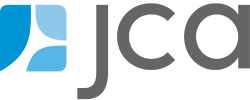Paving a Path Forward for Your Nonprofit Technology

Shannon Abitbol
Senior Consultant
When Dorothy walked on the yellow brick road, her famous line “Lions, tigers, and bears—oh my!” became a colloquial expression of awareness and discovery.
In nonprofits, we work hard toward the mission. Our yellow brick road is paved with actions that will affect the communities we serve—all leading to the Emerald City—to accomplish our mission. Each day, we walk our own yellow brick road, meeting new people that both support and teach us, building excitement to help us arrive at our destination. At some point, our yellow brick road might grow wider to allow for all the people who want to join. Adding to our group might require changing the way we walk on the road and how we organize the people with us.
Making changes along the path might cause frustration. The passion for arriving at the destination—the mission—may drive the group to carry on their journey, despite the new frustrations. The accepted frustrations may even join the journey for a long time, until one day someone is courageous enough to pause and ask: “What do we really need to get to our destination?”
What Technology Does Your Organization Need to Get to Your Destination?
Asking what is needed is a chance to take a step back, change perspective, and adjust. It’s important to confront critical questions: Are we on the right path? Do we have the tools we need to support us? This can bring important clarity on the journey to your mission. At JCA, we frame the big three—people, process, and technology—as the lanes on your journey. Nonprofit organizations encounter barriers of all shapes and sizes on their path. Awareness and discovery are critical first steps.
So, how do you know what you need at your organization? How do you take a step back and open your perspective? You may have identified some problems or gathered informal feedback from staff about their frustrations. Truly understanding the entire picture of the organization requires a thorough analysis of your people, process, and technology, both singularly and collectively.
Starting Off on the Right Foot with a Needs Assessment
A Needs Assessment can help analyze people, process, and technology in your organization. A needs assessment aims to answer the big question—What do you really need to get to your destination? Getting the answer to this starts with important questions like:
- Which processes work well for you?
- Which processes cause frustration or workarounds?
- What is your team’s biggest need?
- Do you have the proper skills/roles in place to accomplish your goals?
- How do you use data to inform your decisions?
- How are you using technology?
These questions lead to important information about what your teams do, how they do it, and how they use systems and data to support their work. Most importantly, giving staff the opportunity to voice their concerns can increase morale and buy-in at your organization. Change can be hard for some. A Needs Assessment also looks at your organization’s appetite for change—will change be accepted, rejected, or ignored? Knowing your people is important, especially if your analysis determines that change will be required to get what you need for your journey.
As an example, leadership might notice that gift processing is moving slowly. In the discovery and awareness process, you might learn that staff are unclear on prioritizing their responsibilities and they are working on other tasks before processing gifts. Or, leadership might learn that staff are creating manual processes and workarounds because the system that they are supposed to be using is not meeting their needs. In the case of unclear priorities, the organization can address this with proper planning and internal dialogue. Training can be scheduled to support staff needs or empower them to make changes in processes that better align to efficiency.
A Fork in the Road: Fit Gap Analysis, System Selection, or System Optimization
Through the Needs Assessment process, we can help you select the right fork in the road for your organization. A Needs Assessment can identify a number of different paths, including a Fit Gap Analysis, System Selection, or System Optimization.
- A Fit Gap Analysis is a valuable path when organizations are committed to an existing technology solution but want to make improvements. Before you can optimize your solution, you must first understand the gaps in its use as compared to the needs of your users, which is where the Fit Gap Analysis comes to play. A Fit Gap Analysis may build upon a Needs Assessment or can be completed without a Needs Assessment at all. As an example, your Fit Gap Analysis may determine that the technology you are using offers the functionality to support each department’s processes, but custom workflows are needed to streamline operations. Staff may need more training on the systems so that they know how to use them properly. The system may be a fit, but the people and processes are presenting gaps. Analyzing the gaps allows you to identify key areas for improvement. You can keep the system you have, and work toward optimizing its use by addressing the identified gaps.
- If your Needs Assessment shows that your requirements are not being met by the systems due to limitations in functionality, you may be ready for a System Selection process. By documenting your needs first in a Needs Assessment, you are clear on what is essential in a system in order to select the best system for you.
- Alternatively, if you already know what needs to be fixed, you can take the path of optimizing to better meet your needs. System Optimization comes in many forms, such as improving information management practices, changing system configurations, creating new documentation to support users, , or redefining business processes to better align with system capabilities. Essentially, this means taking the time to make the best use of the tools that you have, rather than replacing any tools.
In any case, change can be hard. Taking a step back to ask critical questions and understand the issues is important. Nonprofits are heroes that solve significant problems for their communities. Their people have an extraordinary dedication to making the world a better place—one step at a time. Knowing your internal needs, and finding ways to meet these needs, only strengthens your ability to follow the yellow brick road and make it to your destination.
Unlock New Possibilities from Your CRM Technology & Data
It’s time to finally unleash the full potential of your technology. Overcome your operational and technical limitations with straightforward strategies and impartial advice from our nonprofit CRM consulting experts.

